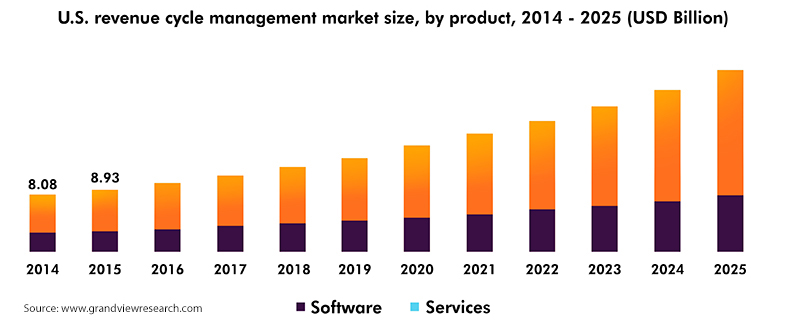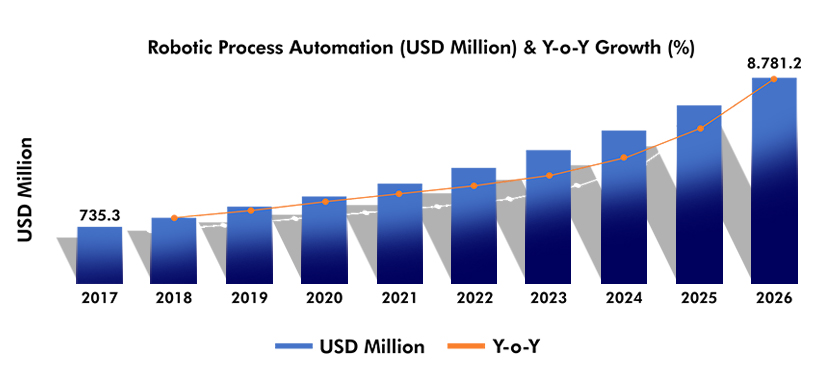As business continues to evolve and as mergers and acquisitions increase, the need to rethink operational workflow has never been more apparent. As a labor-intensive industry that is experiencing change almost daily, the healthcare industry is at the forefront of this new frontier. Organizations are challenged to optimize their bottom line because of declining reimbursements, regulatory reform, payor consolidation, cybersecurity breaches and technology improvements, resulting in increased payroll expenses. With these issues compounding, where is the line drawn between maximizing revenue and controlling costs? Quite often, these questions are one and the same. The answer could be two-fold: outsourcing revenue cycle management and implementing technology-driven solutions.
A Strategic Approach to Business Management
Uncertainty and inconsistency in organizational workflow can be caused by employee turnover, sick and medical leave, new hire training, an influx of patients, and the move to value-based-care. This drastic change of pace not only affects the accuracy of a particular job function, but the duties of each staff employee involved by removing them from their daily tasks to compensate for the loss of production. Revenue suffers, while adding additional stress.
Utilizing the resources of a professional services organization can remedy these stresses. If at any time an employee becomes ill or needs to miss time, there is another highly qualified subject matter expert ready to step in and effectively fill the position, with no need for training or loss of revenue. This maximizes productivity and allows the organization to operate with a high level of stability every single day. In addition, the organization can concentrate on growth, knowing there is a suitable workforce in place to absorb the extra workload.

Revenue cycle management outsourcing, estimated at USD $10.98 billion in 2017, is anticipated to register a compound annual growth rate of 11.2% through 2025. Utilizing an integrated solutions platform that can provide both technology and services, offers a streamlined and coordinated approach through a single platform. This results in the uniform process of data collection and analysis. That in turn will help businesses optimize operations and maximize revenue while making informed decisions.
Robotic Process Automation: By the Numbers
Implementing technological solutions allows an organization to mitigate the need to hire a large workforce, thus enabling growth and decreasing risk, while reducing overhead costs. Robotic Process Automation (RPA) has stepped into the forefront of patient care with an eye on increasing productivity and minimizing costs.
By implementing a digital workforce that can work tirelessly in the background, these tools facilitate repetitive processes with speed and accuracy, allowing organizations to concentrate on more complex operational issues that might otherwise have been neglected.
Upon further review, the global Robotic Process Automation market size is estimated to grow at a compound annual growth rate of 29.5% between 2018 and 2026, with the market estimated to reach USD $8,781.2 million by 2026. The growth in this market is mainly attributed to the constant need to automate complex and expensive business processes across multiple industry sectors that eliminate human error and offer greater control and stability in a secure environment.


Embracing Disruptive Solutions to Create a Competitive Advantage
While executives have worked to develop a strategic vision for the future of the organization, many have neglected to embrace and implement process improvement and technology throughout their organization to keep pace with the vision. According to a 2018 Deloitte healthcare survey, executives admit that running daily operations and focusing on competitive priorities makes it difficult to step back and rethink their workforce in a more strategic manner.
After identifying the need to implement change, what are the next steps? What is the appropriate course of action to fully utilize all available resources and technologies that will have a dramatic impact on the financial wellbeing of the organization?
Identifying and Aligning with a Trusted Business Advisor
Identifying a strategically aligned business partner who will guide you through the rapidly changing healthcare rules and regulations, while simultaneously providing cutting-edge technology solutions and augmenting your current operational procedures, will be key to future success. Optimizing revenue cycle management operations across the healthcare spectrum is essential to success in today’s rapidly changing environment.
Organizations will be in position to properly execute their strategic vision while maximizing efficiency and income by thoroughly reviewing processes from front end operations, medical coding, charge entry, claims submission and rejection, payment posting, accounts receivable and patient payment, all the way through to risk management, clinical documentation improvement and physician training. All this while applying the appropriate technology solutions to complement process upgrades.
The Result
With an eye on maximizing operational efficiency and increasing productivity while minimizing expenses and optimizing revenue, every dollar matters. Robotic Process Automation can increase productivity anywhere from 10% to 70%, depending on job function. And utilizing the resources of a professional services organization can add to that productivity by helping solve a number of workforce issues. Facilitating these key operational improvements into the strategic vision of the organization will provide the competitive edge necessary for success for years to come.
Source Material:
https://www.grandviewresearch.com/industry-analysis/us-revenue-cycle-management-rcm-market
https://www.polarismarketresearch.com/industry-analysis/robotic-process-automation-market
https://www2.deloitte.com/content/dam/insights/us/articles/HCTrends2018/2018-HCtrends_Rise-of-the-social-enterprise.pdf

